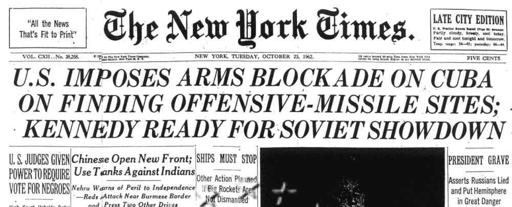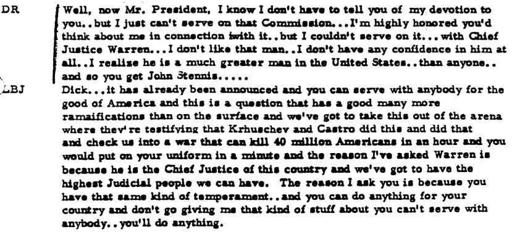Impossible: The Case Against Lee Harvey Oswald (54 page)
Read Impossible: The Case Against Lee Harvey Oswald Online
Authors: Barry Krusch
Tags: #Non-Fiction, #History
Proof that the shell was turned over on November
27,
and not a later date, such as November 30, was the following receipt prepared by James Hosty (CE 2003: 24 H 347):
72
So, why is Fritz providing sworn testimony that the Commission requested the shell when the Commission
hadn’t even been formed
? The charitable interpretation is that he was mistaken. But, taking into account the context of coordinated disinformation just revealed, we can be forgiven for disregarding this charitable interpretation.
The astute reader will have noticed that we have moved into some very interesting territory here. This chapter was supposedly designed to discuss evidence justifying or not justifying an element of the First Proposition of The Case Against Oswald, but now we see that the evidence that was supposed to convict Oswald has instead backfired into meta-evidence that that evidence
itself
is irredeemably tainted, which will have a major impact on our base legal assumption:
All the evidence in The Case Against Lee Harvey Oswald stipulated as admissible is
authentic
. The admissible evidentiary record is comprehensive,
credible
, sufficient, and consistent to the extent that it precludes reasonable doubt regarding both of the following propositions regarding the assassination of President John F. Kennedy:
Is the evidence in this case
authentic
, and if it is, is it
credible
? If it is not authentic in even one area, and/or could be shown to lack credibility in predictable key areas (revealing a pattern of dissimulation), it not only would fail to justify the guilt of Oswald, but in a boomerang effect, would now operate to demonstrate the guilt of his accusers!
So, as we proceed through the subsequent chapters, we are now occupying new ground: simultaneously evaluating the impact the evidence that we view with reference not just to the guilt of
Oswald
, but also to the guilt of his
accusers
, in criminal charges related to, at minimum, obstruction of justice, accessories after the fact to murder, and treason.
That is a totally different ballgame, one that the mind naturally resists, and, indeed, ought to resist. When we are talking about numerous people involved in the spreading of coordinated disinformation, in what may or may not have been a conspiracy to cover up the identity of the true assassins of the President using tools that would be the 1964 equivalent of what
Industrial Light and Magic
does for cinema today, we have to first cross a threshold to evaluate this evidence. The spread of coordinated disinformation is a serious charge, and leads us to one final remaining question related to that threshold, a question many readers may have already asked themselves, and one asked by Vincent Bugliosi (RH 1460; emphasis supplied):
Let’s assume, for example, that the CIA was behind the assassination. After the assassination
, how could the CIA have gotten the FBI, Secret Service, Dallas Police Department, the autopsy doctors, indeed, the Warren Commission itself, to go along with the horrendous crime the agency had committed
and do the great number of things the conspiracy theorists say these various groups and people did to cover up the CIA’s complicity in Kennedy’s murder? Wouldn’t that be an impossible task?
Here Bugliosi asks a legitimate question. Yes, one or more plants/contract agents in the Dallas Police Department and FBI may actually have had knowing involvement with a conspiracy to assassinate the President from the beginning, but on the other hand, in a coverup of that crime, many individuals would have needed to be unwittingly involved in a cooperative capacity. Can we really say that
all
these people were
knowing
co-conspirators?
Our intuition tells us “no!” A crime of this magnitude would have to have the
least
number of people involved as part of the “inner circle,” if for no other reason to prevent discovery of the conspiracy and the ultimate identity of the perpetrators. Yet, numerous other people who would
not
have this knowledge would be called upon to cooperate after the fact as part of a coverup operation. How could
these
people be drafted into the plot, however unwittingly?
Enter the World War III cover story.
To understand the methodology of surreptitious inclusion, one has to understand the psychology of the 1963 mindset. Just over a year earlier, the Cuban missile crisis occurred, and the United States seemed to be on the brink of nuclear war, as Americans woke up to headlines like these (
The New York Times
, October 23, 1962):
Following a steady dose of “duck and cover” civil defense training films that had earlier been seen by millions of kids in the 1950s, the Cuban Missile Crisis seemed to seal the deal and turn the most hardened scoffers of those training films into true believers.
The historical crisis was resolved when Kennedy and Kruschev together worked to bring America back from the precipice via mutual compromise, but this flirtation with the ultimate disaster — global annihilation — had to be fresh on people’s minds, an omnipresent threat waiting in the wings.
An extremely useful tool for psychological leverage! This was not lost on President Johnson, who utilized this psychological tool to persuade his friend Richard Russell to serve on the Warren Commission. One version of the World War III cover story might have gone something like this: “This guy Oswald is a communist, and we have some pretty good evidence that this was a communist plot, instigated by either Cuba or Russia or both, but if we let the American people discover this, then we are going to have to take action, certainly a declaration of war, which could easily lead to a nuclear exchange. So to prevent the death of millions of innocent Americans, we are going to have to make sure that everyone thinks that Oswald is the lone assassin.”
The author has been unable to locate any documentary evidence of this more detailed version, but there is on the record a transcript of the “lite” version of the cover story as transmitted to Russell on Novermber 29 by Johnson, with several of the details stated explicitly implied. Johnson meets Russell’s reluctance to serve on the Commission with a good old-fashioned Texas power-play, the nuclear edition:
73
How many people besides Senator Russell were given this story, and in what form: in public places, or in smoke-filled rooms? If it is more than this one, we have an explanation for a methodology by which innocent, patriotic Americans could have been enlisted to cooperate in a conspiratorial effort without any knowledge on their part! Douglas Horne, Senior Analyst on the Military Records Team of the Assassination Records Review Board, citing author David Lifton, discussed this possibility in the context of medical personnel (an area of the case we have not yet investigated;
Inside The ARRB
, v. 4, pp. 1181-82; emphasis supplied):
Lyndon B. Johnson . . . used the fear of a nuclear holocaust to persuade an extremely reluctant Chief Justice Earl Warren to chair the Presidential Commission whose primary goal was to quash rumors of conspiracy about Kennedy’s assassination. Needless to say, this extreme form of arm-twisting — laying a guilt trip on Warren by telling him that unless he cooperated and chaired the Commission, 40 million people could be killed in a war between the United States and the U.S.S.R. because of rumors about an international Communist conspiracy — worked like a charm.
David Lifton has come to refer to the application of this psychology by LBJ as the ‘World War III cover story
,’ . . .
I say this because I do not for one minute believe that Robert Knudsen; Drs. Humes, Boswell, and Finck; Dr. Ebersole; Dr. Canada; nor Admirals Kenney, Galloway, or even Dr. Burkley, were knowing participants in the conspiracy to kill President Kennedy. They were, however, all clearly knowing participants in the medical coverup — but
if they were told that they had to suppress evidence of multiple shooters to prevent World War III, then they doubtless believed they were engaged in a coverup necessary for the survival of the nation and the prevention of a worldwide nuclear holocaust
.
If the distribution of this cover story was more widespread — and there is at least one key piece of evidence on the record that it is, the Katzenbach memo — then we have an explanation that could turn an improbability into a probability.
But could the cover story alone account for all the examples of unintentional cooperation that we may be coming across? No. The cover story was not the
only
method of surreptitious inclusion, and indeed, due to its sensitive nature, could only have been given to the most key parties, which then brings us to a second method.
Any key party given a cover story could then issue
orders
to their subordinates, and
their subordinates would follow orders without necessarily knowing the reason why
. The orders the subordinates were given could have been either to a) keep silent about something they had seen and/or b) provide testimony consistent with a “refreshed” memory (i.e. change their stories), and/or c) do an action and keep quiet about it, as the primary possibilities.
Regarding the first possibility, we know, for example, that medical personnel at President Kennedy’s autopsy were ordered not to reveal what had transpired there, forced to sign “gag orders” which were in effect for approximately 15 years — so-called “rights” to free speech be damned. Here is what one of those gag orders looked like (ARRB MD 138):
74
Other books
The Kingdom by the Sea by Paul Theroux
Duty Bound: Bound and Tied, Book 2 by Myla Jackson
The True Darcy Spirit by Elizabeth Aston
Frayed by Kara Terzis
A Case of Christmas by Josh Lanyon
Holiday Magic (Second Chance) by Matthews, Susanne
The Dinner Party by Howard Fast
The Last Woman Standing by Adams, Thelma
Claiming the Chaperon's Heart by Anne Herries
The Trap (Agent Dallas 3) by Sellers, L. J.


